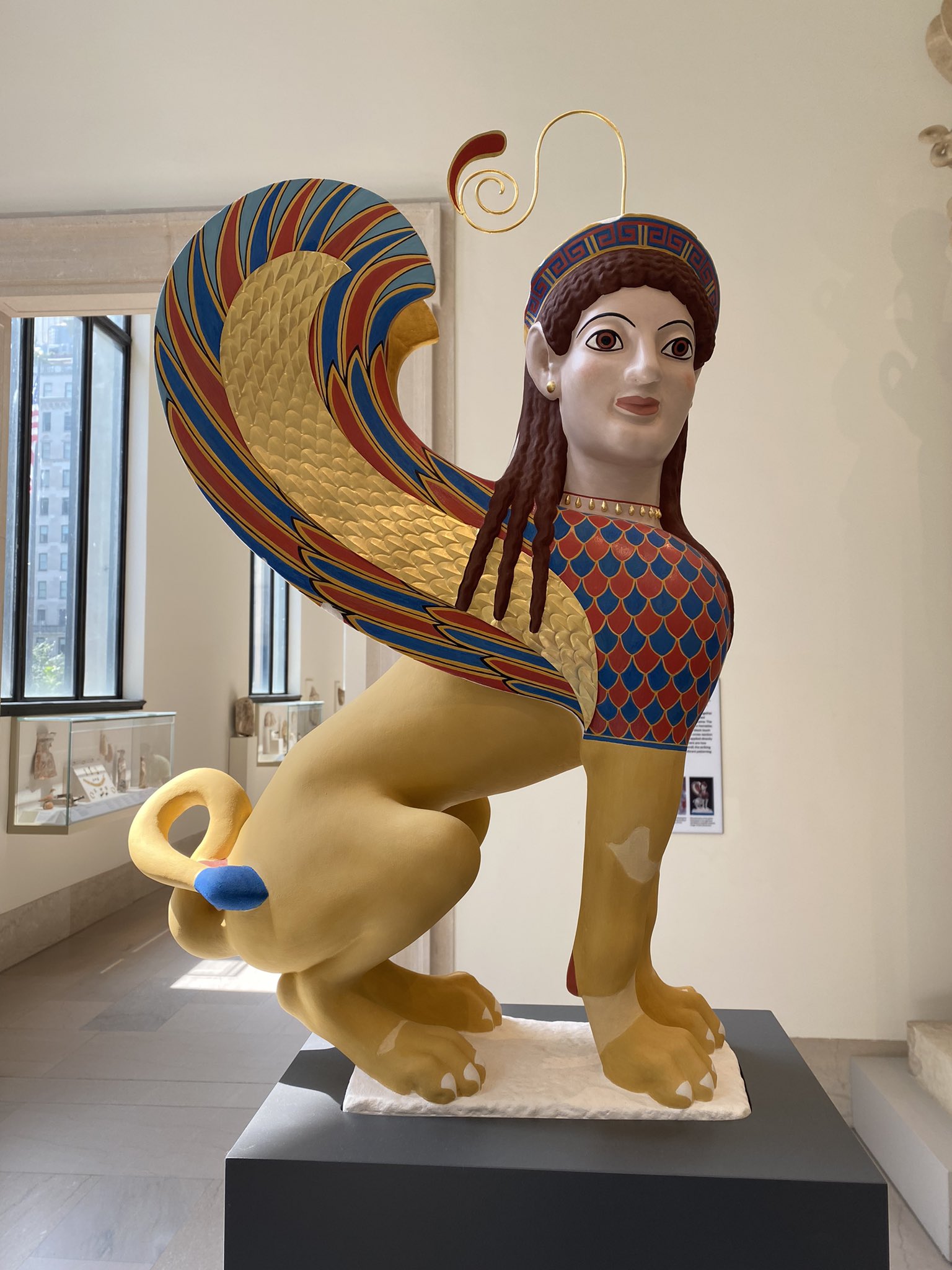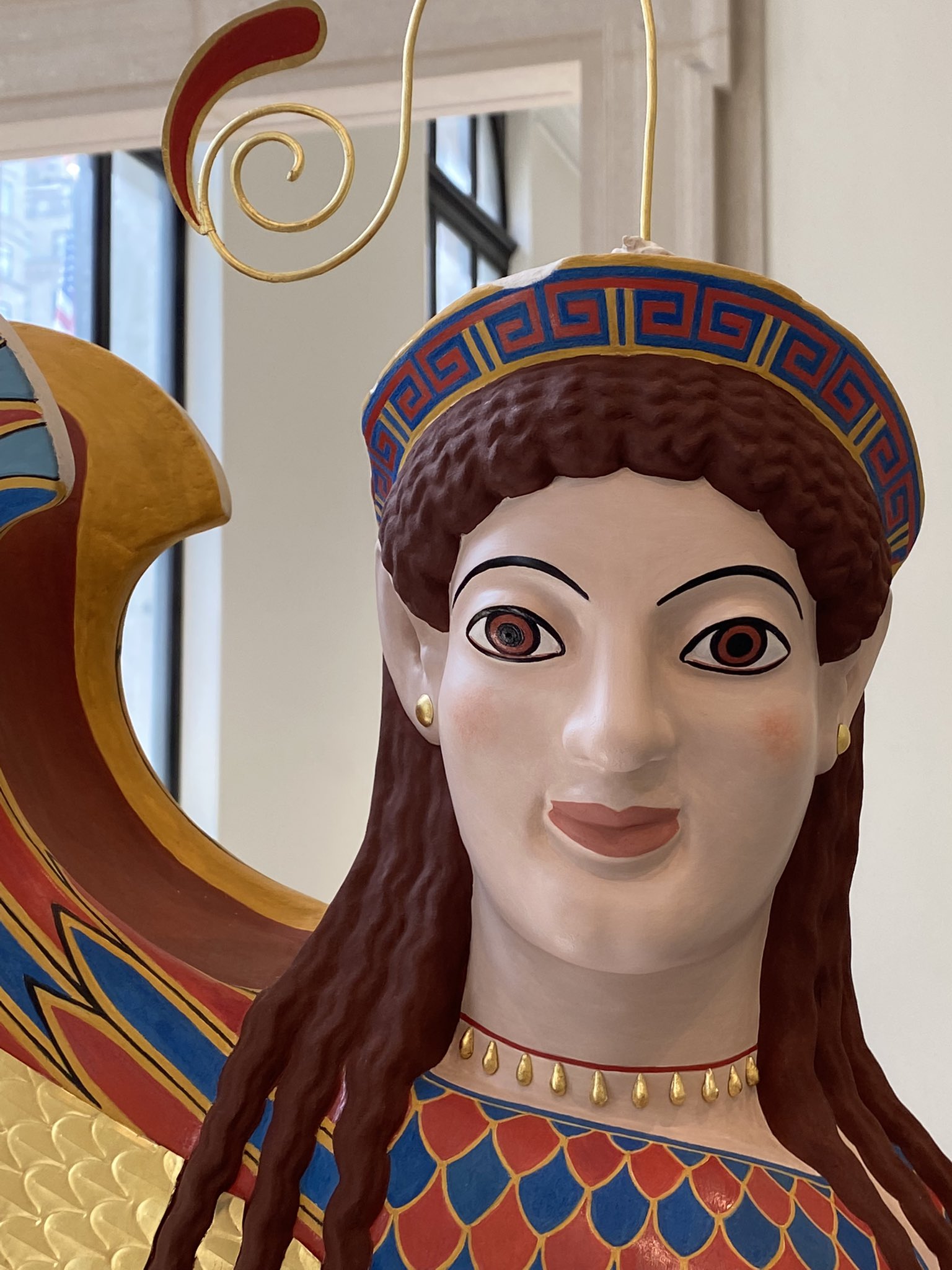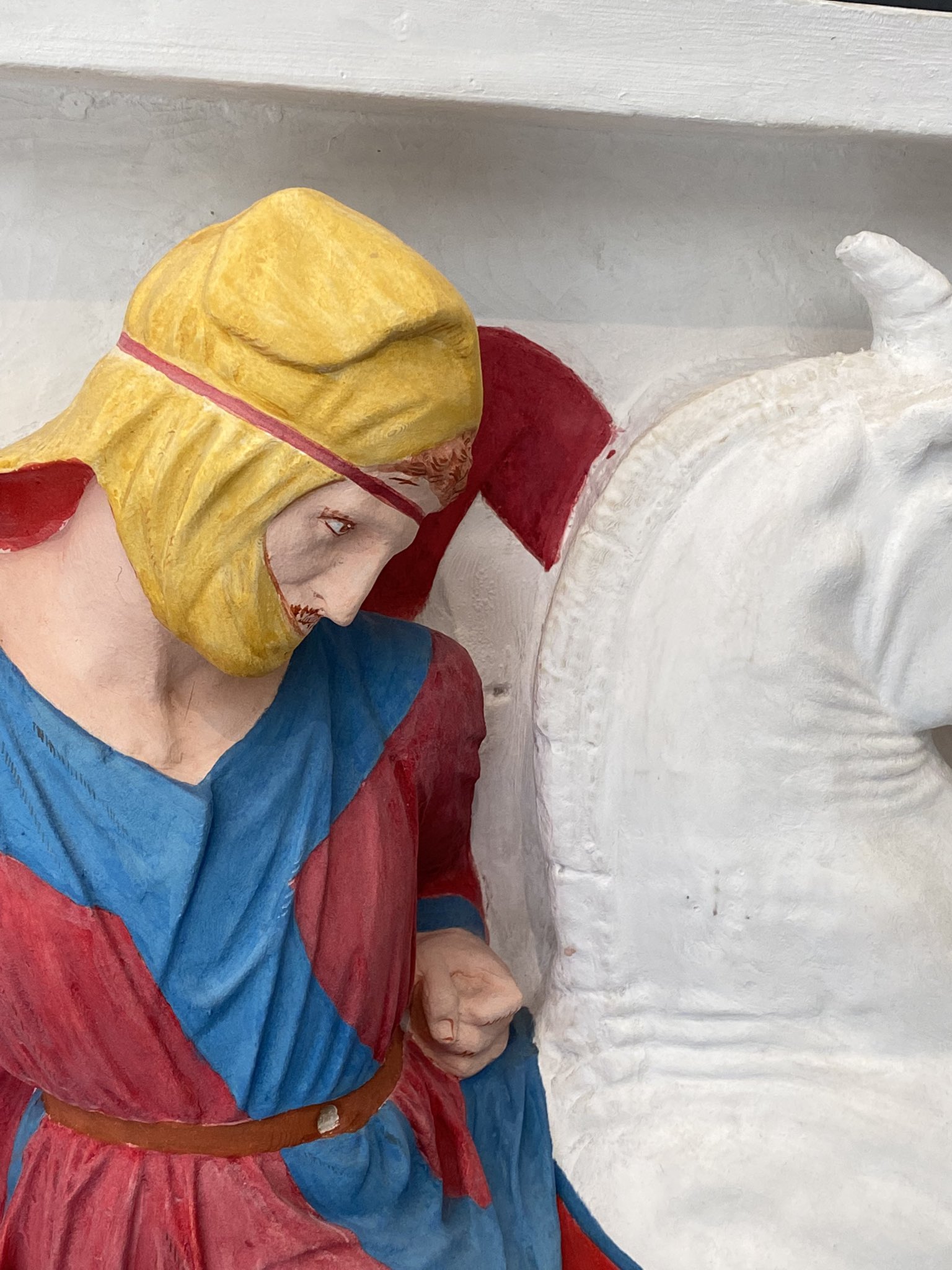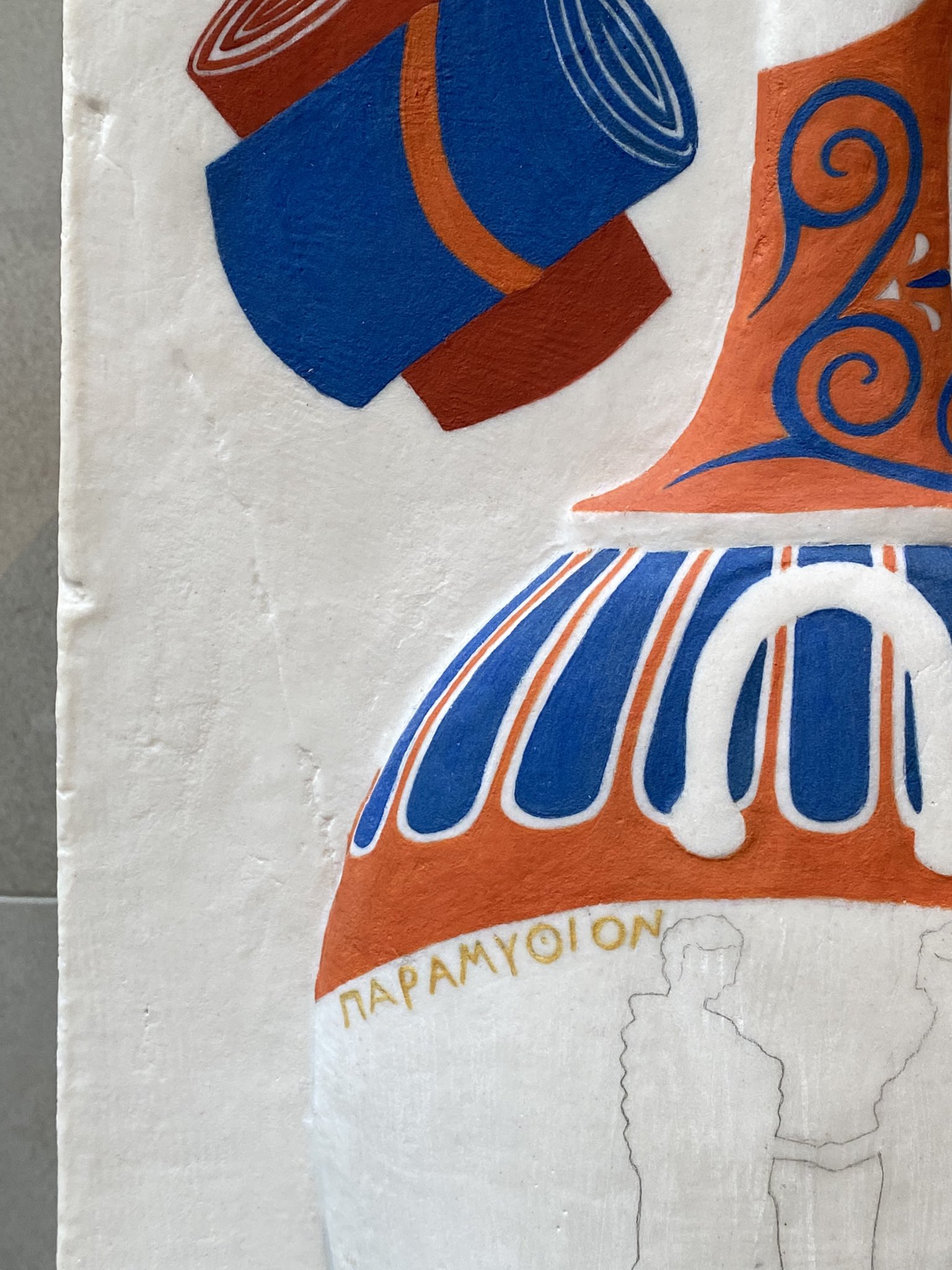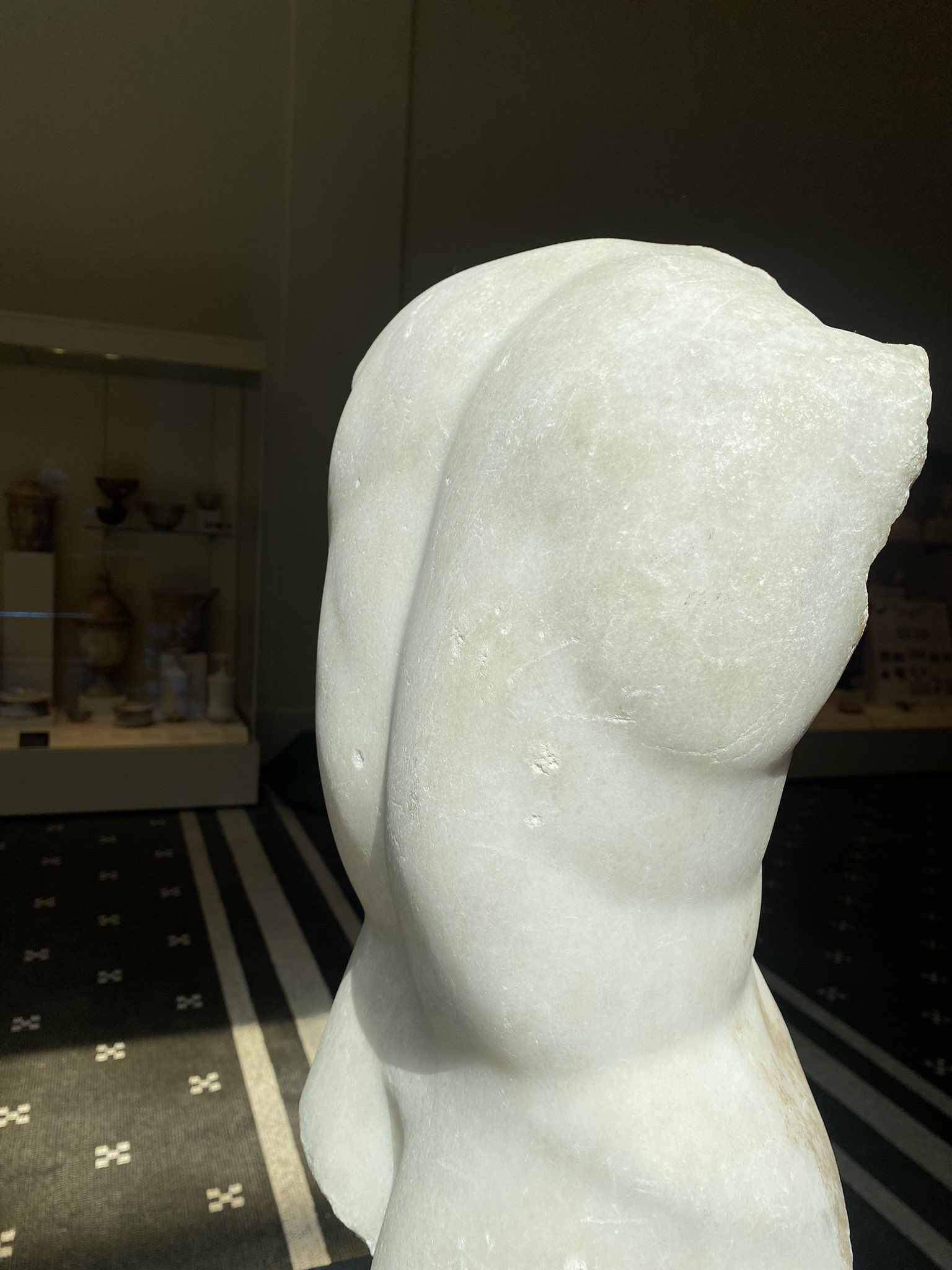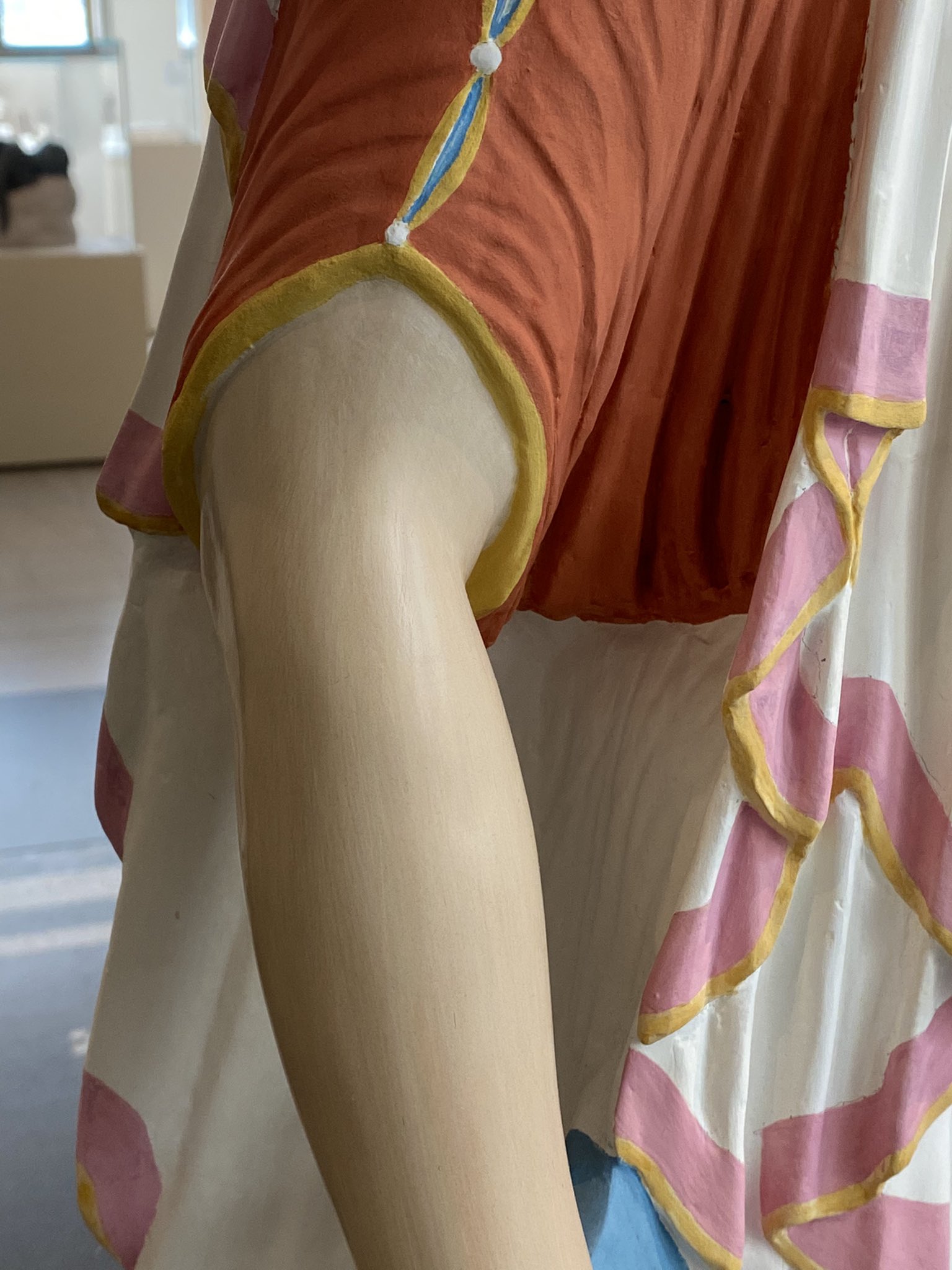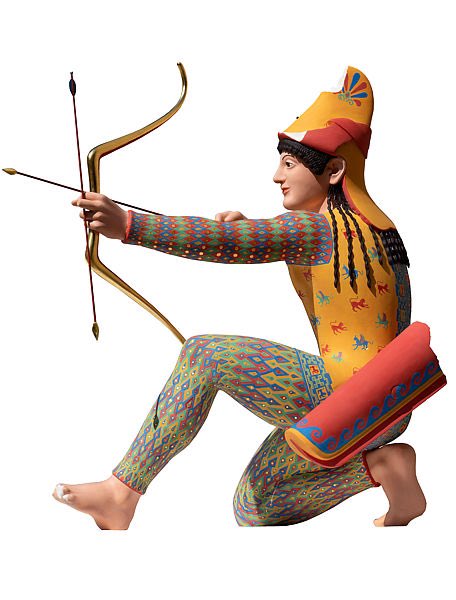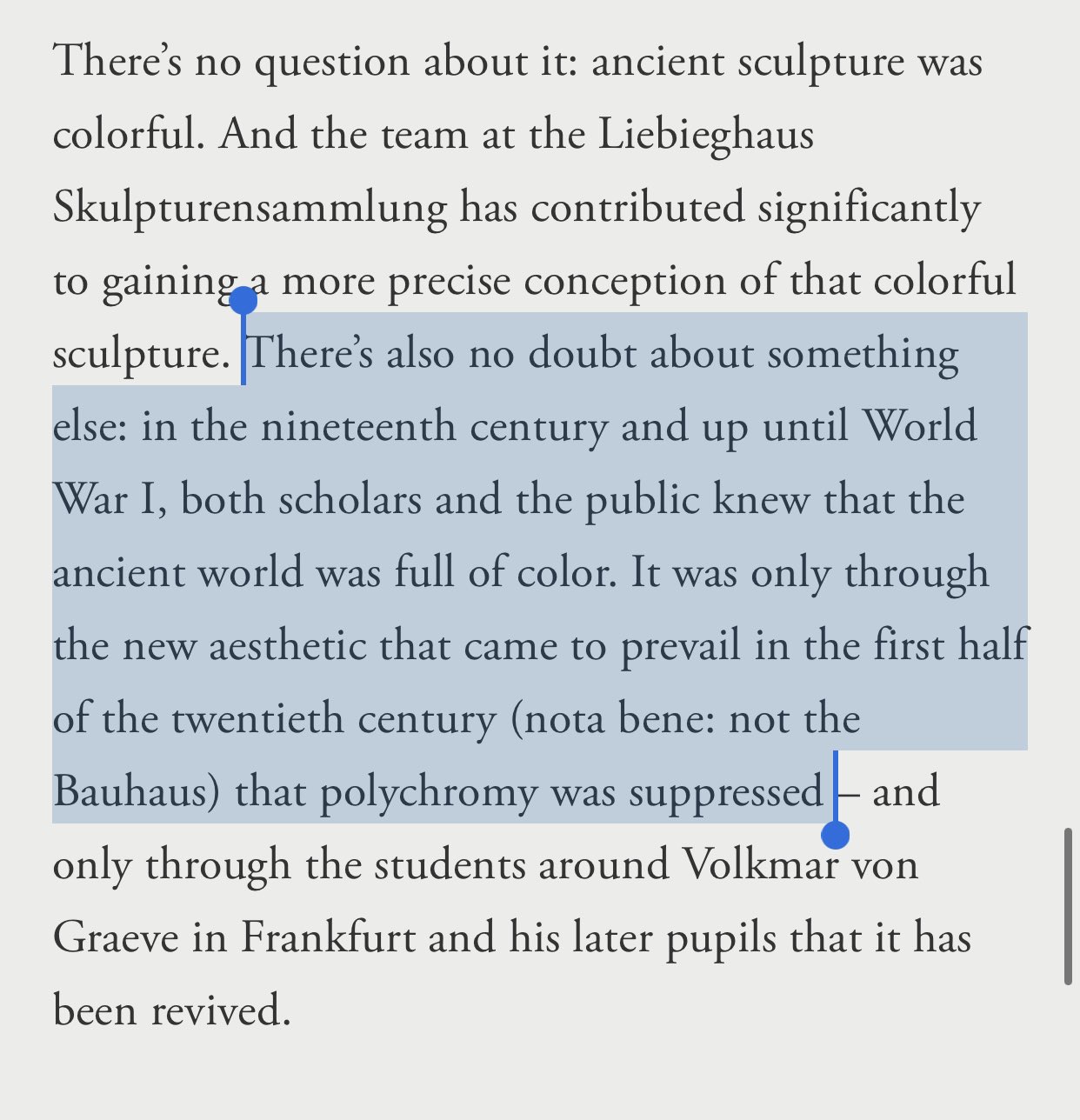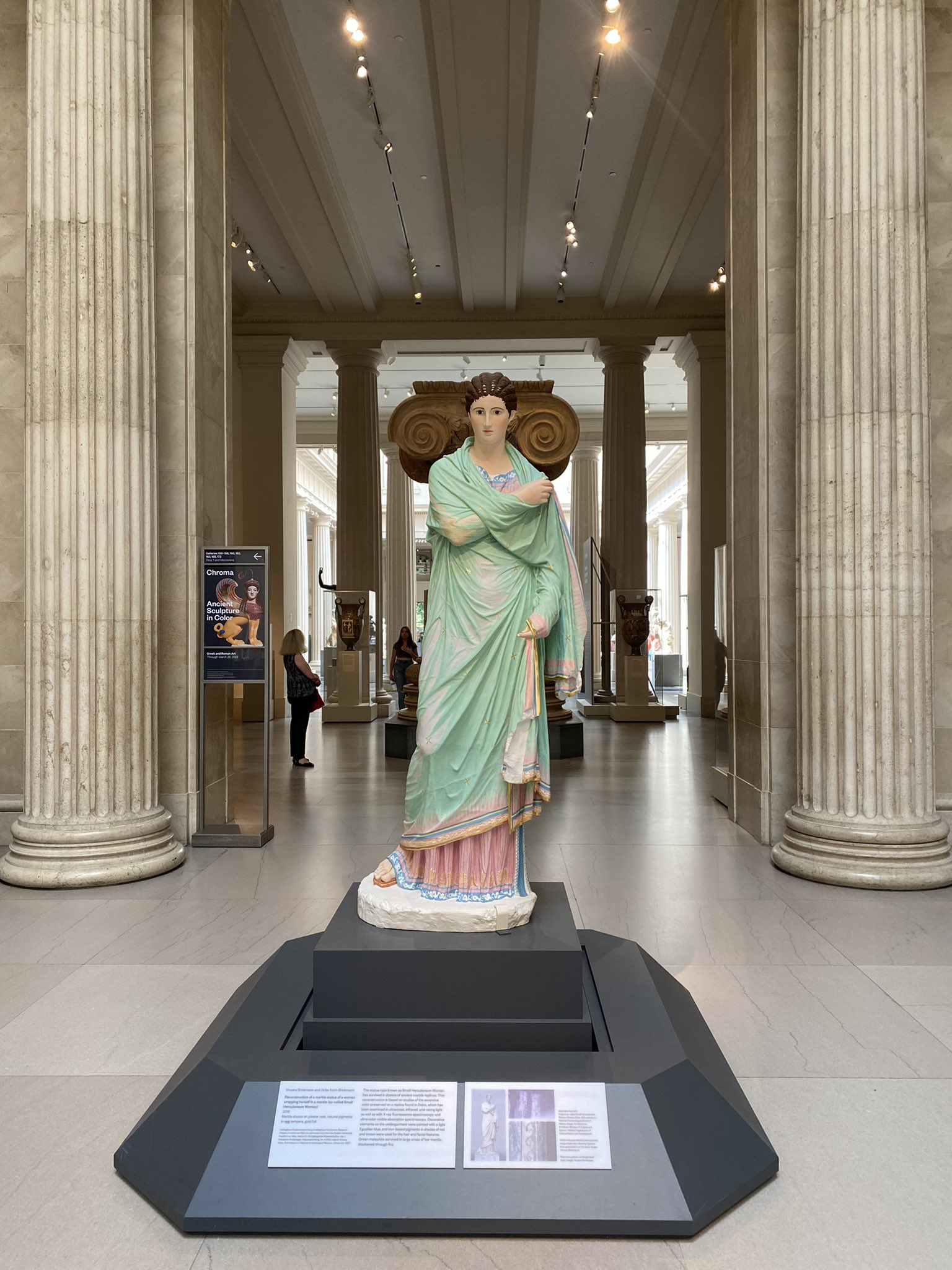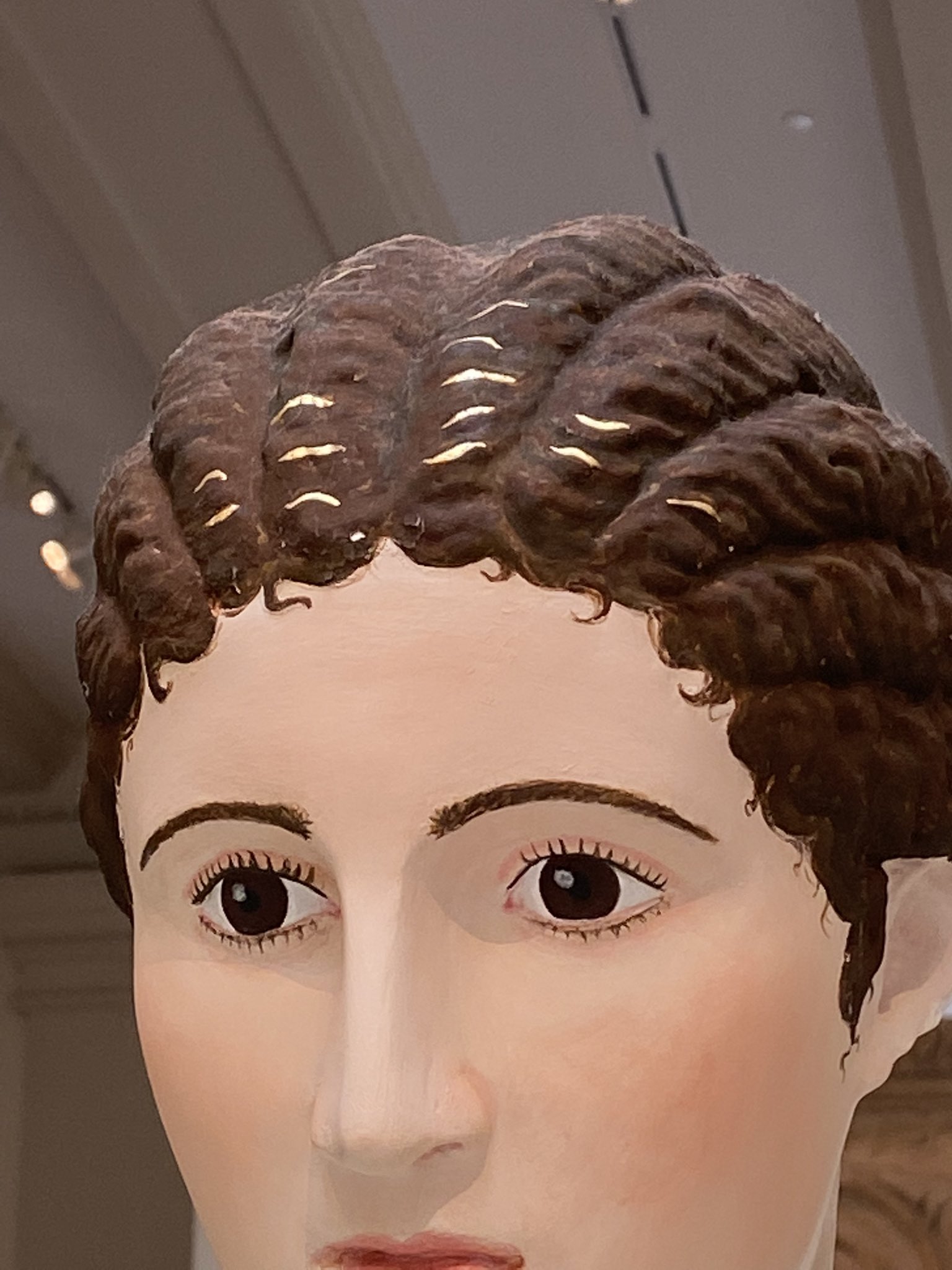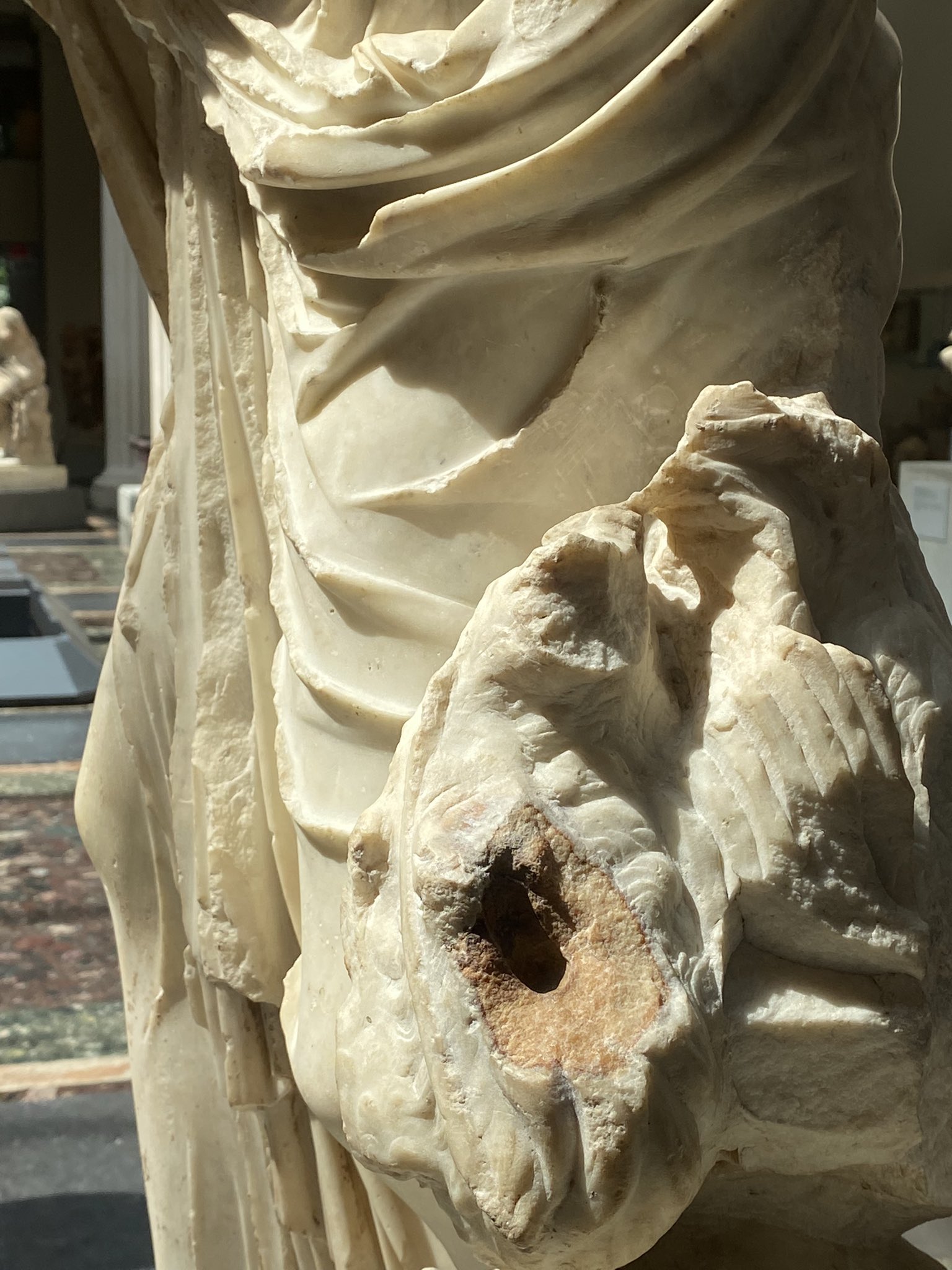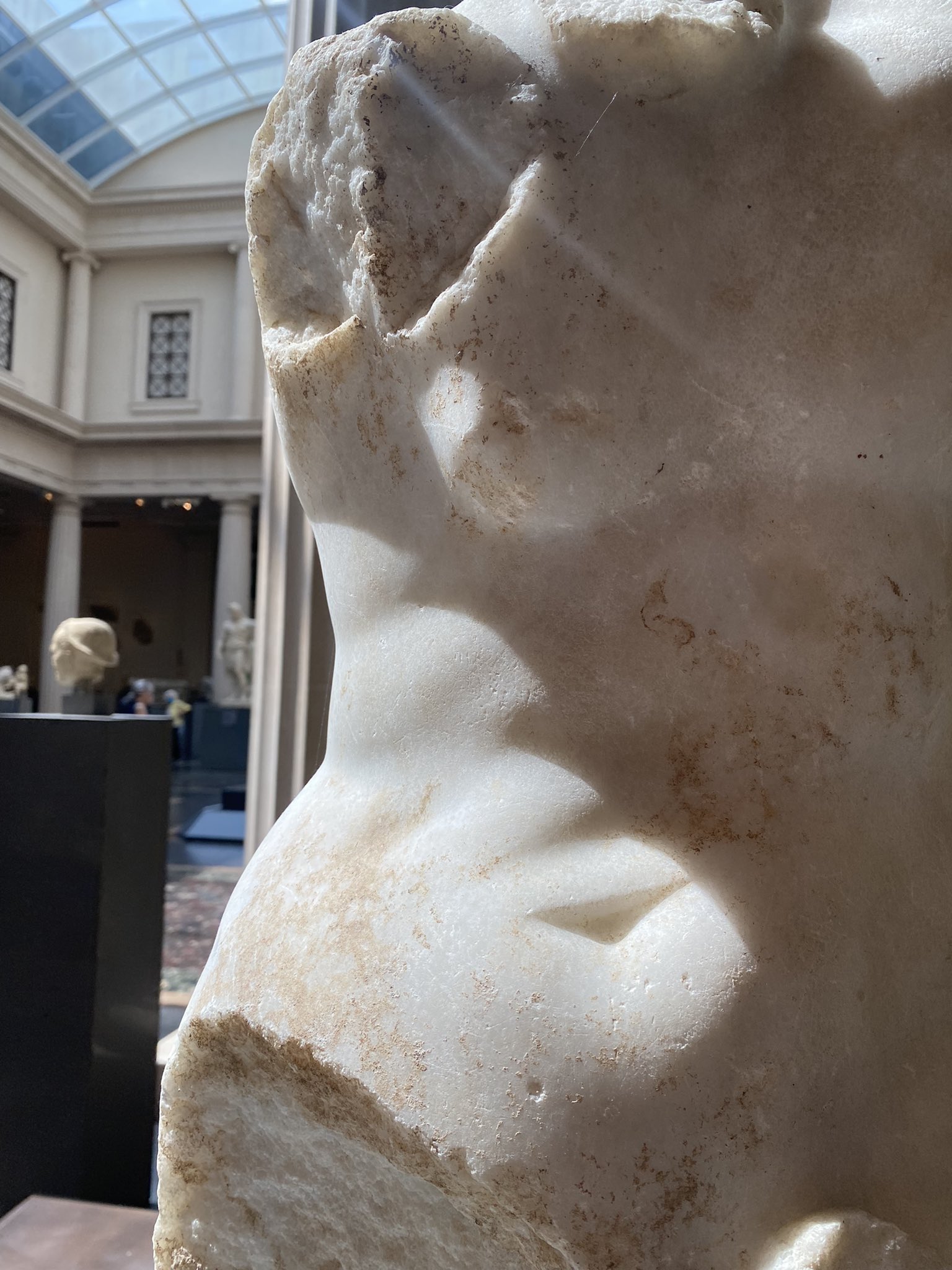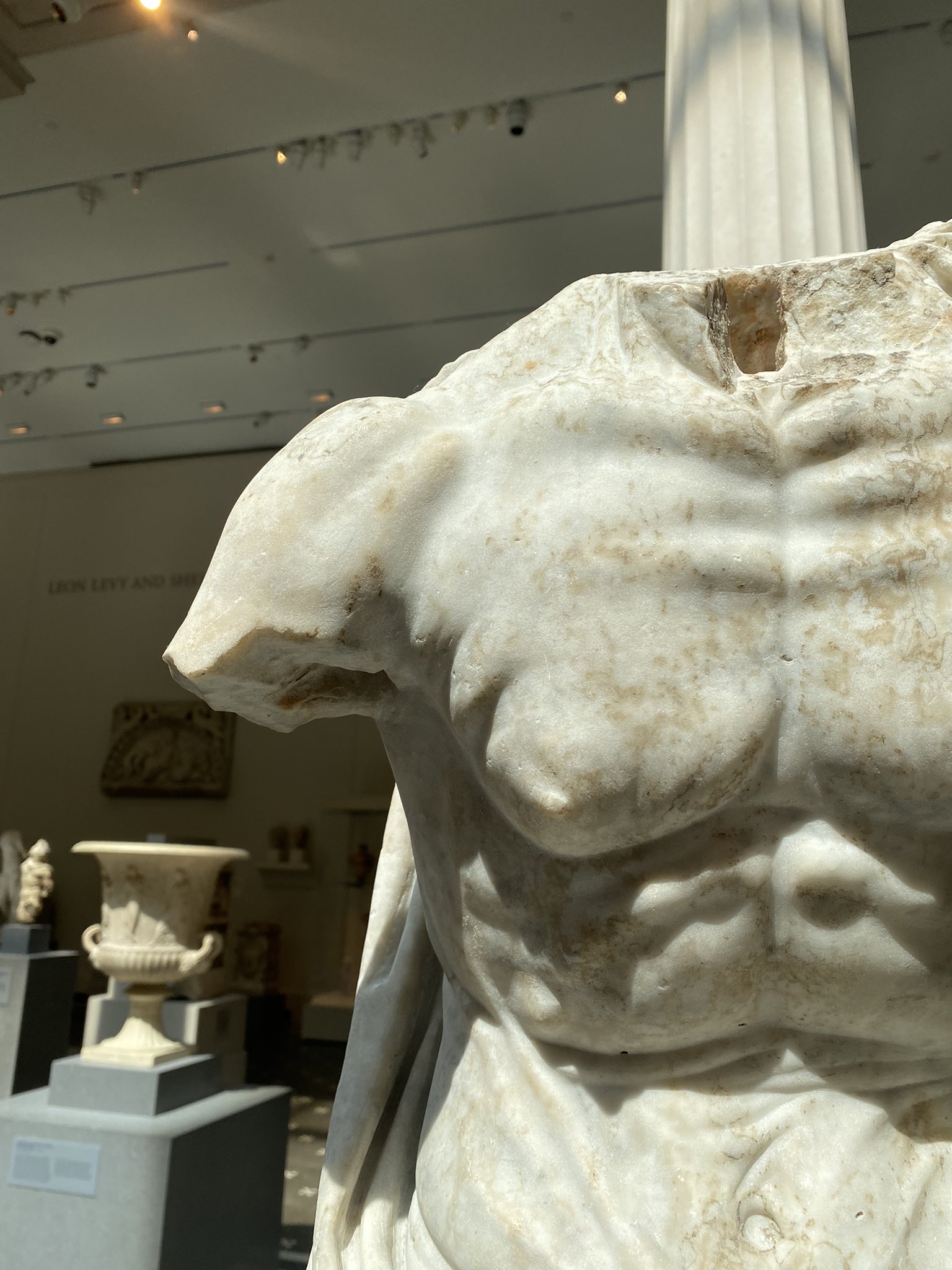Thread
Some thoughts on the Met's Ancient Sculpture in Color show: the reconstructions, helpful educationally, are also works of contemporary art. They can say a lot about Greek/Roman sculpture, but much more about the Brinkmanns, the German couple that's been making them for decades.🧵
Since the 80s, Vincenz Brinkmann has been working on photographing and recording evidence of pigments, while Ulrike Koch-Brinkmann paints the reconstruction models. The first painted cast, of the archer from the west pediment of the Temple of Aphaia, appeared in 1990.
In the context of an *art* museum, what stood out to me was precisely the constructed nature of those painted casts. Yes, they are all "recent" in the grand scheme of things, but the differences between the materials/methods available in 2006, 2010, and 2022 are enormous.
Take for example the difference in the choice of underlying material for the cast: 1) 3D printed polyethyl methacrylate, 2022, 2) marble stucco, 2010/2019, 3) marble stucco on plastic, 2006, 4) synthetic marble, 2008. The textures (esp of unpainted parts) are quite different!
Personally, of these 4, to me only the synthetic marble one looks even remotely associable with the look and feel of the real marble used by the ancients. Different marbles shimmer and shine differently, and this quality would have worked *alongside* the painted parts.
So, why was synthetic marble chosen for one reconstruction, and a 3D print for another? Do the Brinkmanns consider both equally successful? Equally intriguing are the differences in the waxy sheen of some reconstructions (left) but not others (right).
The technological leaps of even the last 10 years are monumental, and yet that chronology seems a bit lost in the desire to signal-boost ancient polychromy as a concept. Which is a totally fair desire, but a show based mostly on modern reconstructions is unusual for the Met,
and a stronger focus on the artistry of the production process could have sharpened the critical eye of the viewer. Without such a lens, the evidentiary status of the recons is left unexamined, or worse - is taken to be how the statues "really were" rather than best guesses.
This great video, on view in the mezzanine gallery, does present more insights into the Brinkmanns, but we do not get a sense of them as artists, which is (to me) the really interesting part about their work.
youtu.be/ULQvS-iKNcQ
Let me explain:
youtu.be/ULQvS-iKNcQ
Let me explain:
The Brinkmanns see their works as two things: as aids for research on an object, and as educational tools. But they are also art objects, and like all art, they are made under not just technological but also social and political conditions of their time.
Social: How does their collaboration work? How do they resolve uncertainties between themselves, esp since Ms. Brinkmann is the one who paints? Do they mind the circulation of later-updated versions of their models (left, variant B from 2006, right variant C from 2019)?
Also, their work is explicitly politically motivated, as can be clearly seen from Brinkmann's own words. In important ways, their work is not just art, but contemporary *German* neoclassical art. This matters, because it shows the real life stakes behind their academic pursuits.
And finally, how does the vastly different reception of their work in 1990 and 2022 affect their confidence? Do they face pressures about the skin tones chosen for the reconstructions, and how do they react?
Of course, you could ask all these questions of any museum reconstruction/graphic, cause every image has a motivated maker, but given Chroma's strong emphasis on the many reconstructions made by a single couple, this is an extra rewarding opportunity.
One great thing is that for some objects, the entries on the Met's website go into a lot more detail than the labels on those objects in the show, as in the case of this Small Herculaneum Woman from 2019:
www.metmuseum.org/art/collection/search/853791
www.metmuseum.org/art/collection/search/853791
I thoroughly enjoyed seeing the show, and recommend it highly to non specialists and specialists alike.
Also, the amount of supplementary material online pertaining to polychromy in the Met's own collection is impressive. Just look at the visiting guide: www.metmuseum.org/exhibitions/listings/2022/chroma/visiting-guide
Also, the amount of supplementary material online pertaining to polychromy in the Met's own collection is impressive. Just look at the visiting guide: www.metmuseum.org/exhibitions/listings/2022/chroma/visiting-guide
